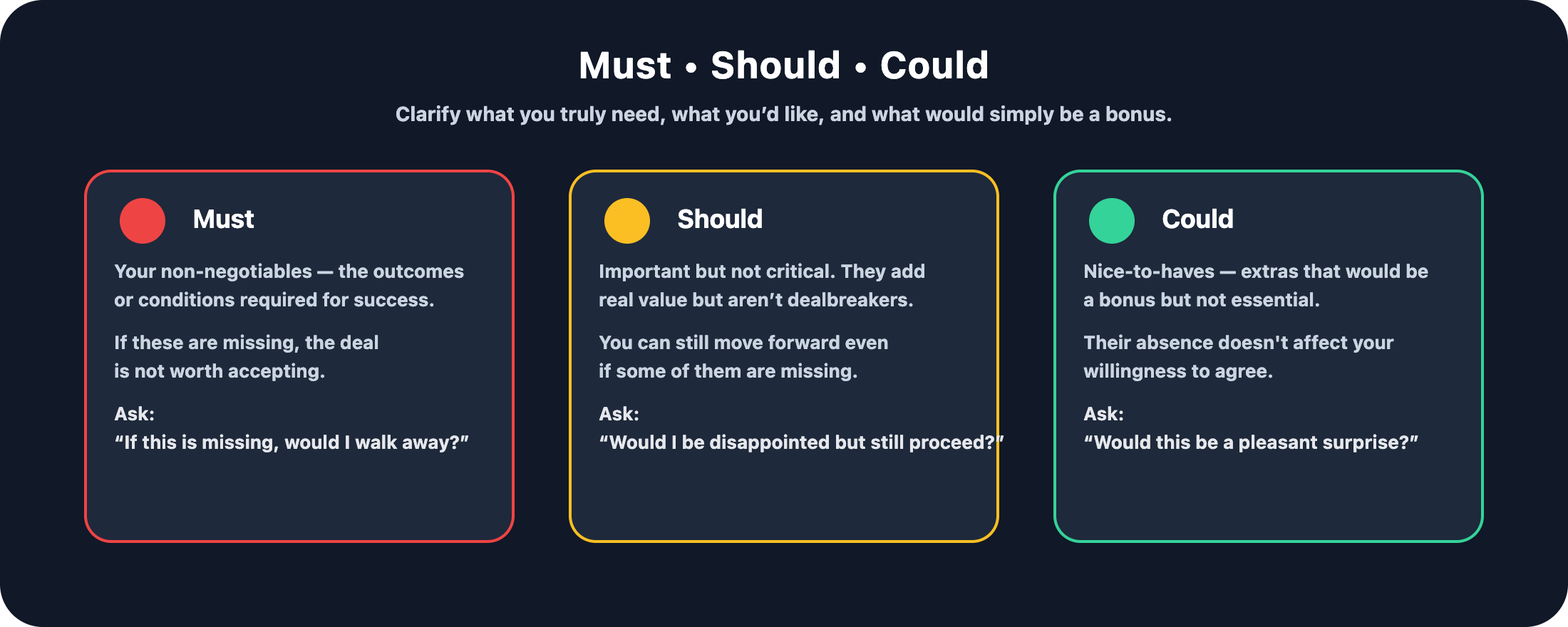Welcome to Practice Compromise in Persuasion, where you'll develop the essential skills needed to navigate the delicate balance between standing firm on what matters and adapting when circumstances demand flexibility. Throughout this course, you'll discover that compromise isn't about losing or giving up—instead, it's about finding creative solutions that move everyone forward together.
The most influential people understand that persuasion often requires meeting others halfway, recognizing trade-offs that benefit everyone, and knowing when to pivot your approach entirely. As you progress through this course, you'll learn how to negotiate with flexibility while maintaining your core objectives, identify win-win opportunities that others might miss, and recognize when your current strategy isn't working. Additionally, you'll master the art of maintaining strong relationships even when immediate agreement isn't possible. Let's begin by exploring how to negotiate with the flexibility that makes real compromise possible.
Before entering any persuasive conversation, you need crystal clarity on your non-negotiables versus your nice-to-haves. Start by listing everything you want from a situation, then carefully categorize each element. Your essentials represent the core outcomes that, if missing, would make the entire effort pointless. This clarity helps you stay focused on what truly matters while remaining open to alternative paths that might surprise you with their effectiveness.
A simple framework for distinguishing essentials from optionals is the Must-Should-Could technique:

Before any persuasive conversation, list your goals and sort them into these three categories. This process forces you to clarify your priorities and makes it much easier to communicate them clearly to others. By using this framework, you avoid treating every aspect as equally important and reduce the risk of deadlock, making it easier to find creative solutions that satisfy everyone’s true priorities.
Understanding what others truly need versus what they merely prefer is equally crucial for successful compromise. Most people won't volunteer this information unprompted, which means you need to ask thoughtfully and listen carefully to their responses. Begin your exploration with open-ended questions that invite honesty, such as "What aspects of this are most important to you?" As you listen, pay attention not just to their words but to the emphasis and emotion behind them. When someone says "We need this done quickly", probe deeper with "What's driving that timeline?" Through this deeper inquiry, you might discover their real concern is meeting a certain deadline, which opens up different solutions than if they simply preferred speed for convenience.
Creating psychological safety for this exchange often requires you to lead by example. When you share your own constraints first, you model the transparency you're seeking. This reciprocal openness frequently reveals surprising areas of alignment and unexpected opportunities for creative problem-solving. Remember that boundaries aren't obstacles to be overcome; they're the helpful borders that show you where productive compromise can actually flourish.
Presenting multiple options stands as one of the most powerful tools in flexible negotiation. When you arrive with only one solution, you force a binary choice between yes and no. However, when you present two or three thoughtfully crafted alternatives, you transform the conversation from whether to move forward into how to move forward together. Develop your options by working backward from both your essentials and theirs.
Here's how this approach might unfold when planning a group trip:
- Jessica: I know we all want to take a trip together, but I'm concerned about how much it might cost and how much time I'll need to take off work.
- Ryan: I get that. For me, the most important thing is that we get to spend quality time together and do at least one outdoor activity. The destination and exact dates are flexible. What matters most to you?
- Jessica: I really need to keep the trip affordable, and I can't be away for more than three days. Is there a way to make that work?
- Ryan: Absolutely. Here are a few options: We could do a weekend camping trip nearby, which would keep costs low and fit your schedule. Or we could rent a cabin a bit farther away, but just for two nights. Another idea is a day trip with a big hike and picnic, so there's no need for overnight stays at all.
- Jessica: The weekend camping trip sounds great. That way, we can all spend time together, keep it affordable, and I won’t have to take extra days off. Can we plan out what we’ll need and who’s bringing what?
- Ryan: Perfect. Let’s make a checklist and divide up the responsibilities so it’s easy for everyone.
Notice how Ryan demonstrates all three flexibility techniques: clarifying his essential need, asking about Jessica's boundaries, and offering multiple paths that respect both sets of constraints. This transforms a potential conflict into collaborative problem-solving.
When presenting alternatives, resist the temptation to overwhelm others with too many choices or to create false options where one is clearly inferior. Instead, frame each path as genuinely viable while highlighting different trade-offs: "Option A is the most affordable but requires more planning. Option B is a bit more expensive but more comfortable. Option C is the simplest and requires the least time." This approach positions you as a collaborative problem-solver and solution oriented. It also gives others agency in shaping the outcome, which naturally increases their investment in making the chosen path successful.
